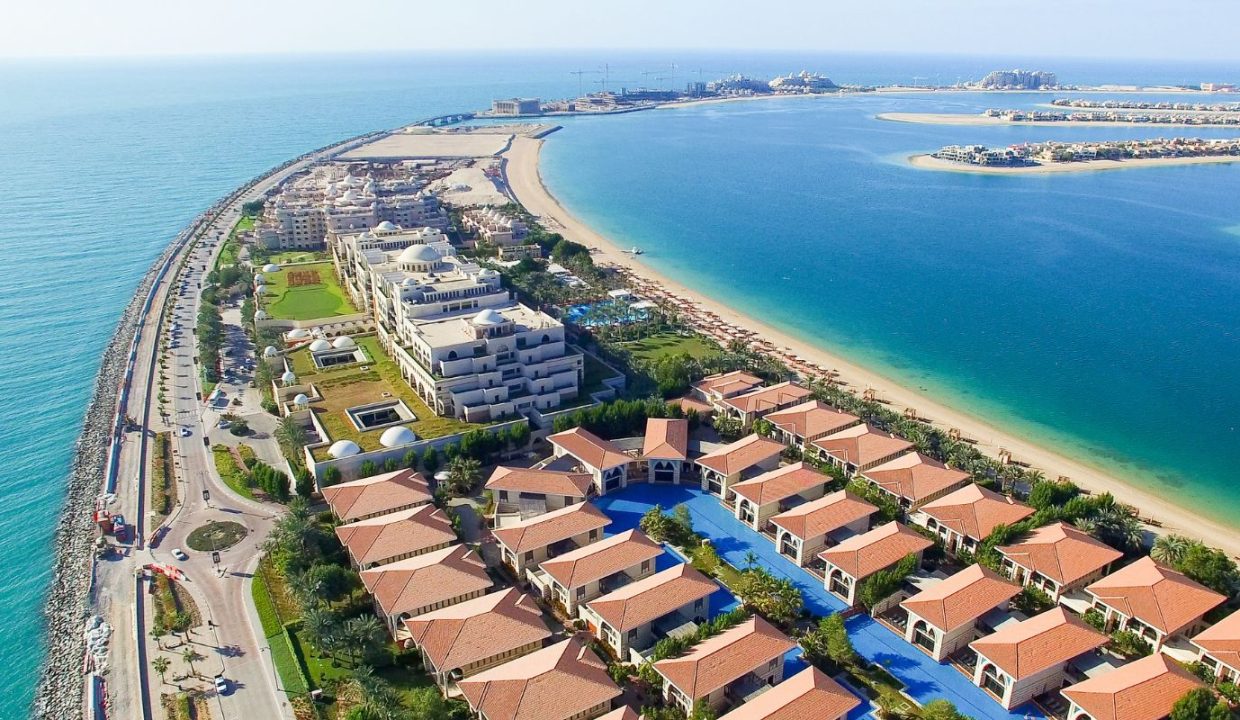
When purchasing a waterfront property in the UAE, most buyers focus on stunning sea views and direct beach access. However, there’s an often-overlooked risk—your prime beachfront location today may not remain so in the future.
Understanding the Landscape: Shallow Waters & Rapid Land Reclamation
The Persian Gulf, particularly along the UAE coastline, is characterized by shallow waters stretching for kilometers offshore. While the maximum depth of the Persian Gulf is only 93 meters, the neighboring Oman Gulf plunges to 3,700 meters—a striking contrast. This shallow seabed makes large-scale land reclamation technically simple, cost-effective, and highly feasible.

The UAE has already demonstrated its ability to reshape its coastline at an extraordinary pace. Entire islands and developments have been constructed within just a few years:
- Al Hidayriyyat Island (Abu Dhabi) – Comparable in size to half of old Abu Dhabi, fully reclaimed with ease.
- Palm Jebel Ali (Dubai) – Built in just six years (2002–2008).
- Dubai Islands (previously Deira Islands) – Completed in four years (2004–2008).
- Dubai Harbour & Emaar Beachfront – Each reclaimed in just two years (2018–2020).
- The World Islands – Created over five years, with each island surrounded by breakwaters to prevent erosion.
The technology and experience required for such developments are already in place. The process is straightforward: dredging ships extract sand from the seabed, deposit it at the target location, and construct concrete breakwaters to stabilize the newly formed land.
What Does This Mean for Buyers?
The “first-row waterfront” property you purchase today could eventually become second or even third-row as new islands and developments emerge further offshore. Dubai’s coastline is constantly evolving, and history has already shown that premium waterfront locations can shift dramatically.
For example:
- Buyers who once invested in seafront apartments near Jumeirah Beach Residences (JBR) or Palm Jumeirah now face newly reclaimed islands in front of them.
- The massive Dubai Islands Beach project was built in an area where previous waterfront property owners once enjoyed uninterrupted sea views.
- Future large-scale reclamation could extend even further beyond Palm Jumeirah, easily accommodating another Palm-sized development.
Government Vision & Market Trends
Dubai’s leadership has a long-term vision for urban expansion, driven by increasing demand for real estate and tourism. If a particular area reaches development saturation, the logical next step is to reclaim more land further into the sea—enhancing real estate value and expanding the luxury property market.
Unlike traditional land development, reclaiming islands in the UAE is:
Faster – Entire islands can be constructed in just a few years.
More Profitable – High-rise towers on reclaimed land generate significant returns.
Unrestricted – Unlike some countries where coastline development is limited, the UAE has a history of bold, large-scale projects.
How to Make an Informed Investment
For those considering a waterfront property in the UAE, strategic planning is essential. To ensure long-term value and exclusivity, buyers should:
- Analyze master plans – Review future urban development to identify potential reclamation projects nearby.
- Assess natural depth – Locations with deep water close to shore are less likely to face land expansion.
- Consider ownership models – Some developments may offer guarantees regarding future changes to the surrounding landscape.
- Consult experienced real estate advisors – A professional agency can provide insights into upcoming projects and help you make a well-informed decision.
Final Thoughts
In most parts of the world, “beachfront property” is a permanent designation. In Dubai, it is a fluid concept. With the government’s commitment to continuous urban expansion, the coastal landscape will likely look very different in the next 20 to 30 years.
For those seeking truly exclusive, lasting waterfront locations, understanding how land reclamation works and where future development is planned is crucial. Investing wisely means not just looking at what exists today, but also anticipating what may come tomorrow.

Patrick
on said
Interesting. Hmm….